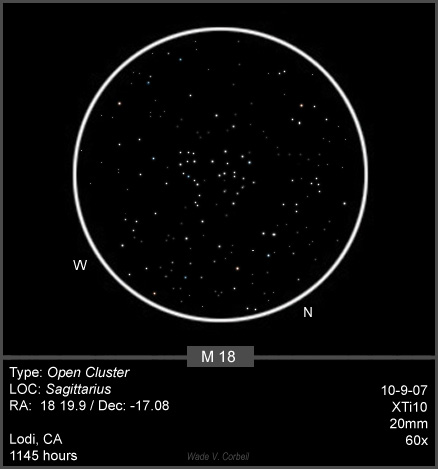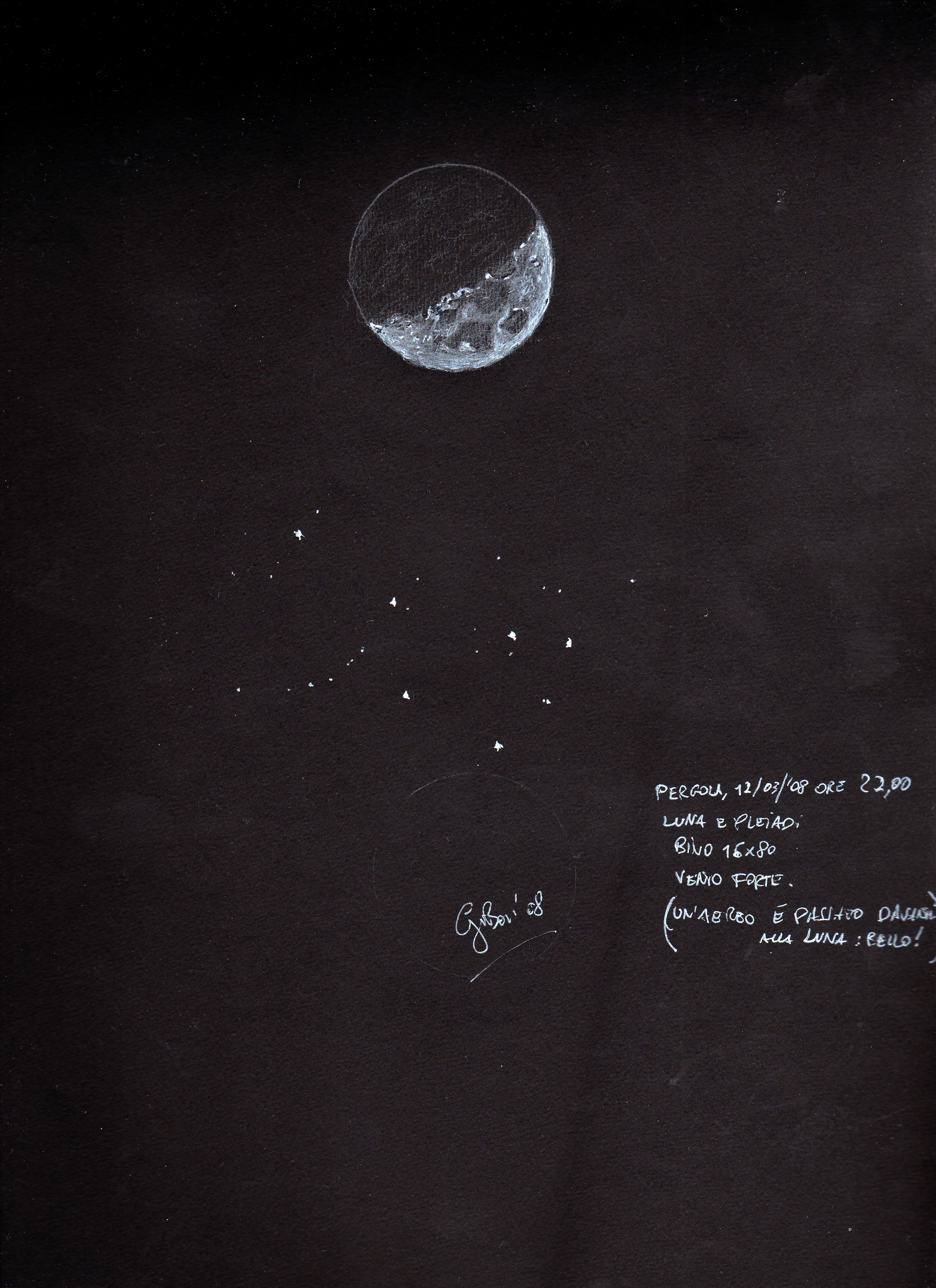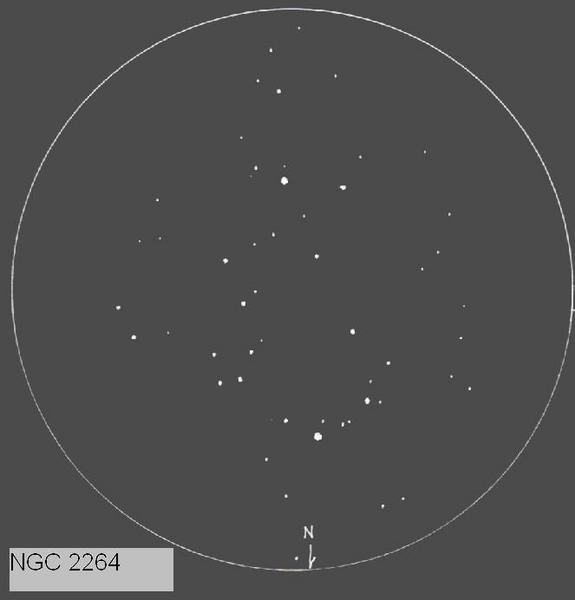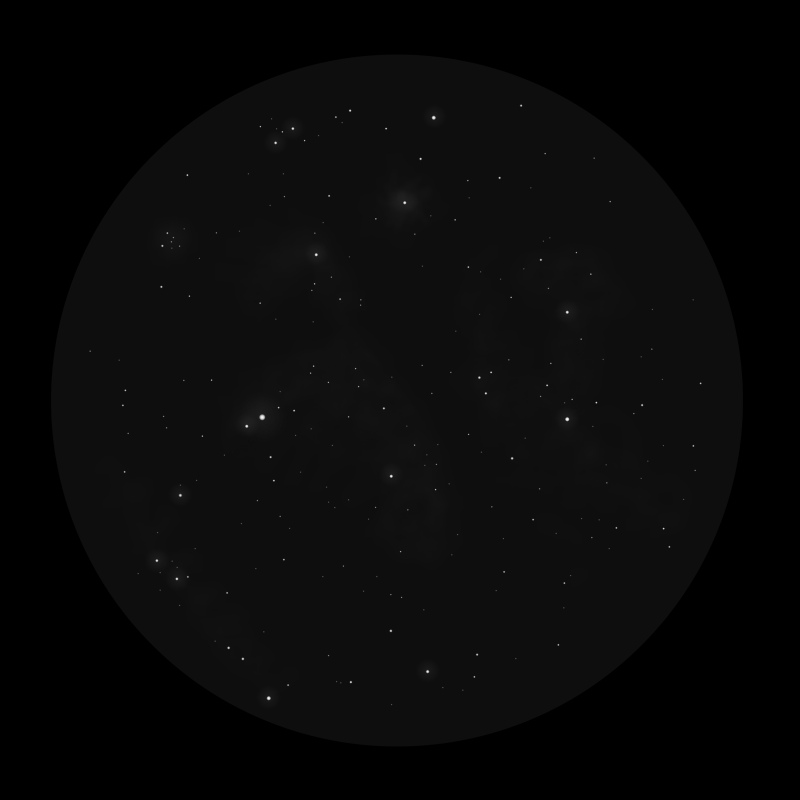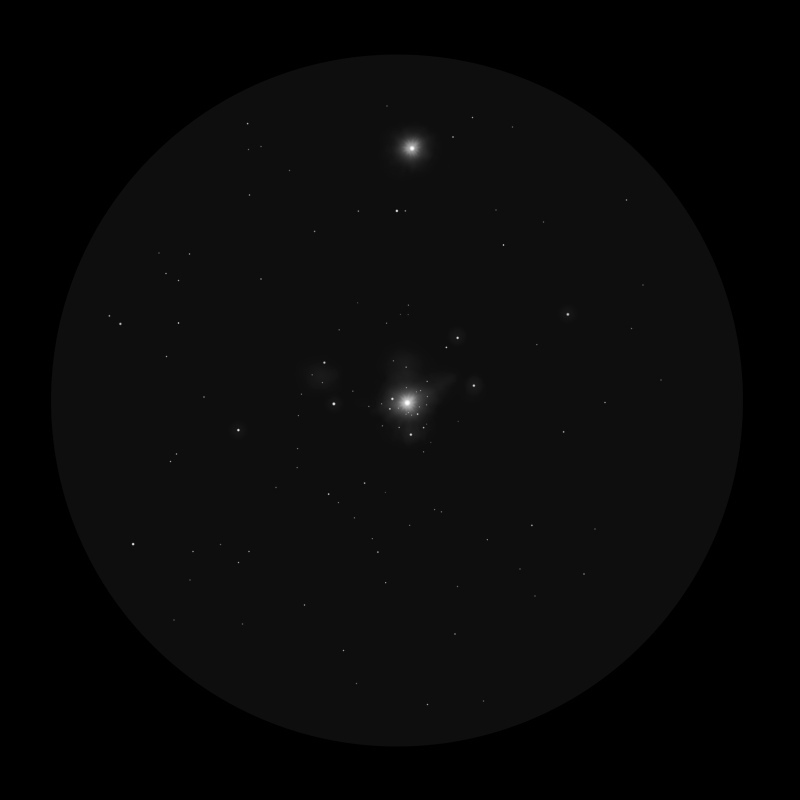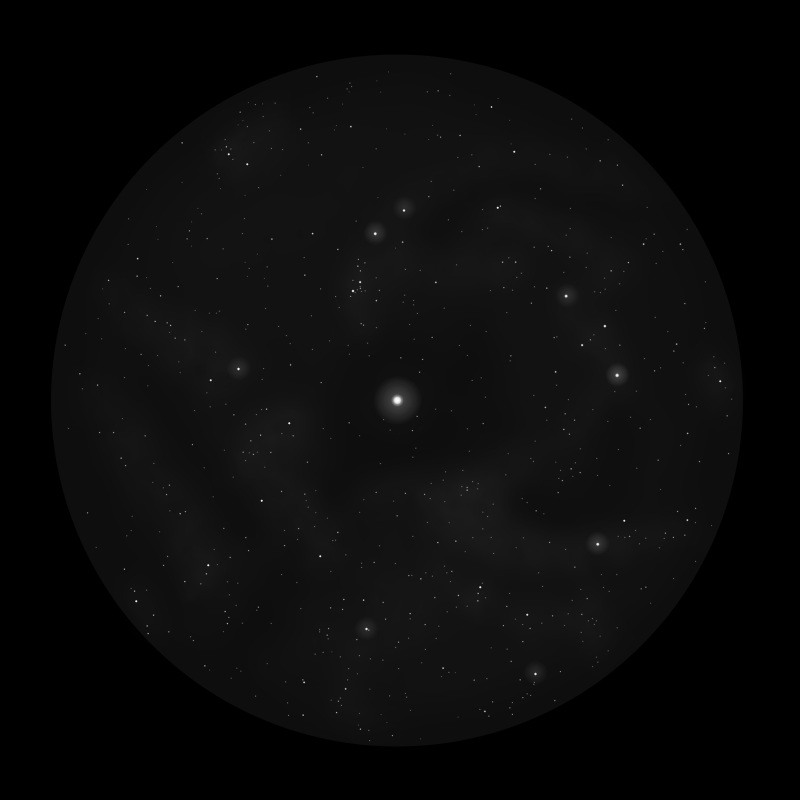M44
Sketch and Commentary by Rony De Laet
M44 in Cancer is a typical binocular object. With a total magnitude of 3.1 the Beehive Cluster or Praesepe was known since antiquity. And indeed, at a distance of 520 lightyears, the cluster is faintly visible as a large nebulous patch to the naked eye. With a simple pair of binoculars the patch resolves into a beautiful V-shaped open cluster measuring more than 1° across. Several multiple stars are visible at low power. The binocular view is perfect for such a large object. Most telescopes don’t offer a wide enough view to show the cluster in it’s ‘natural environment’. While studying the object, I got the impression of a deeper darkness behind the cluster, compared to the overal background brightness. Could this be an optical effect created by the contrast between the cluster stars and the background? I don’t know if it shows in the sketch. The bright star in the lower left part of the sketch is Delta Cancri. The one in the upper left corner is Gamma Cancri.
Observing data:
Date : March 31, 2008
Time : around 20.30UT
Binoculars : Bresser 8×56
FOV: 5,9°
Filter : none
Mount : Trico Machine Sky Window
Seeing : 2,5/5
Transp. : 2,5/5
Nelm : 5,0
Sketch Orientation : N up, W right.
Digital sketch made with PhotoPaint, based on a raw pencil sketch.



